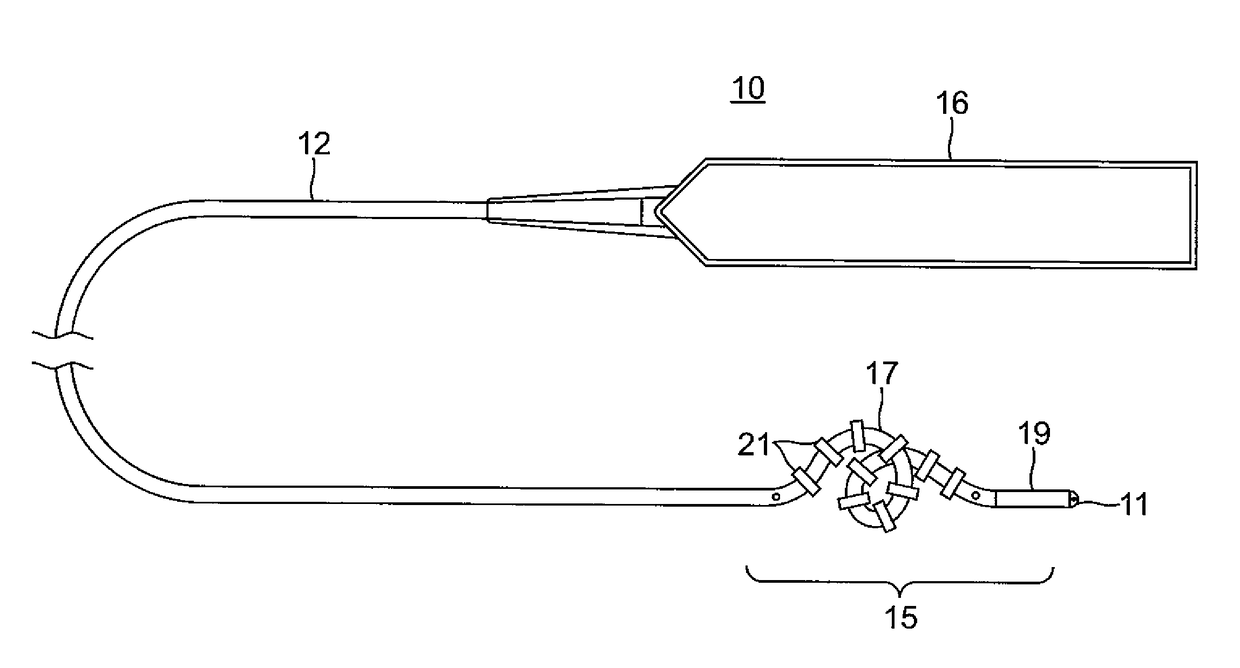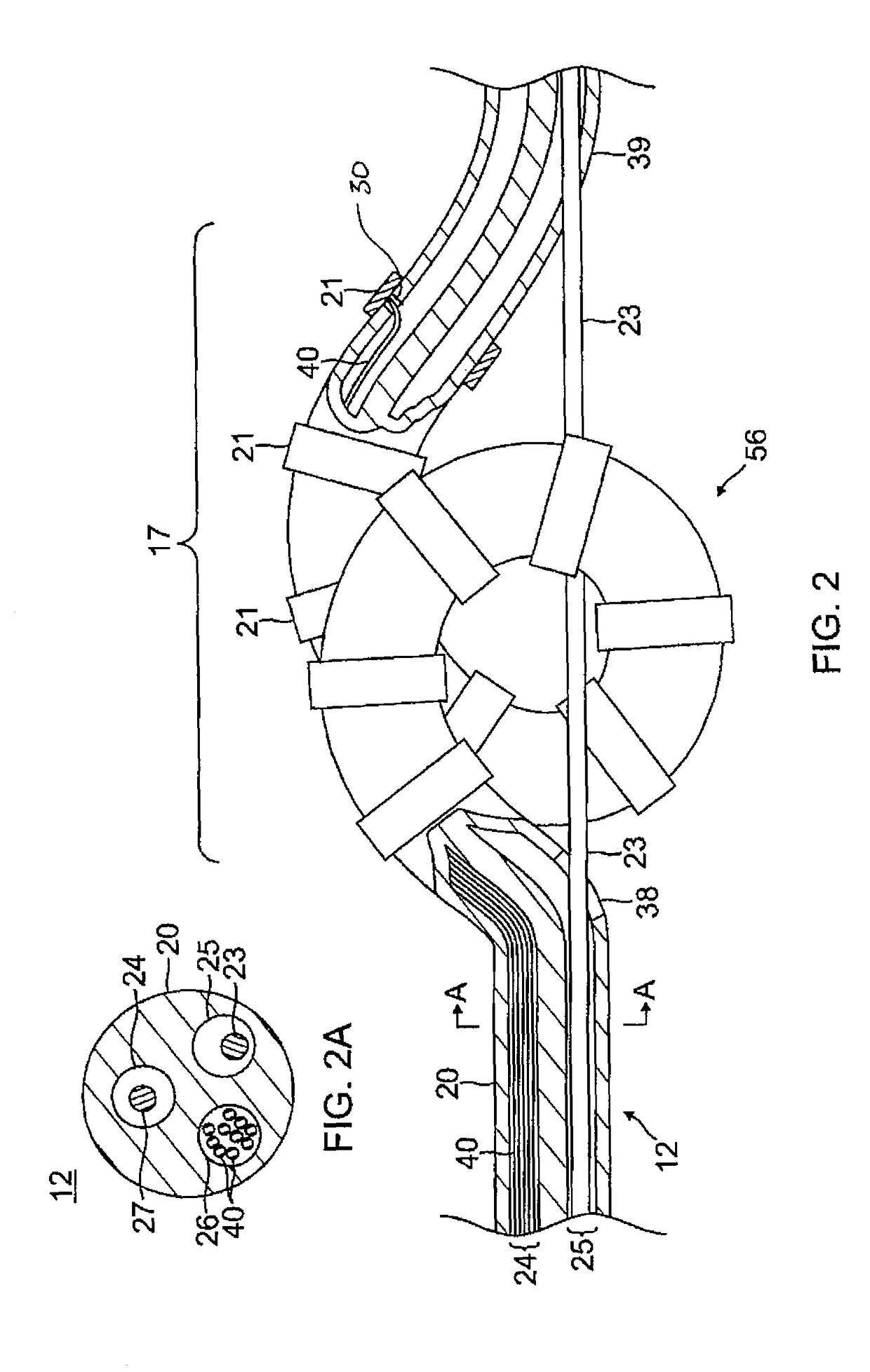Catheter adapted for use with guide wire for accessing vessels
a catheter and guide wire technology, applied in the field of catheters, can solve the problems of global sympathetic denervation below the chest, increased blood pressure, and common clinical problems of resistance hypertension, and achieve the effect of less traumatic profil
- Summary
- Abstract
- Description
- Claims
- Application Information
AI Technical Summary
Benefits of technology
Problems solved by technology
Method used
Image
Examples
Embodiment Construction
[0032]With reference to FIG. 1, this invention shown and described herein relates to a catheter 10 having an elongated catheter body 12, a distal tip section 15 with a 3-D configuration, e.g., a 3-D portion 17 (for example, a helical configuration in the illustrated embodiment) with ring electrodes 21, and a control handle 16. In accordance with a feature of the present invention, the 3-D portion 17 is adapted for ablating an inner surface of a vessel or tubular region to block radial conduction lines without forming a closed loop line of block which may otherwise cause stenosis of the vessel or tubular region.
[0033]With reference to FIGS. 2 and 2A, the catheter body 12 and the 3-D portion 17 comprises an elongated tubular construction provided by a multi-lumened tubing 20 (preferably unbraided for at least the portion 17) with at least two lumens, one of which is dedicated to a guide wire 23. In the illustrated embodiment, there are three lumens 24, 25 and 26, where lumen 25 is ded...
PUM
 Login to View More
Login to View More Abstract
Description
Claims
Application Information
 Login to View More
Login to View More - R&D
- Intellectual Property
- Life Sciences
- Materials
- Tech Scout
- Unparalleled Data Quality
- Higher Quality Content
- 60% Fewer Hallucinations
Browse by: Latest US Patents, China's latest patents, Technical Efficacy Thesaurus, Application Domain, Technology Topic, Popular Technical Reports.
© 2025 PatSnap. All rights reserved.Legal|Privacy policy|Modern Slavery Act Transparency Statement|Sitemap|About US| Contact US: help@patsnap.com



